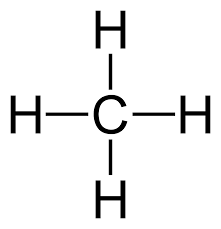First of all, sorry for the (very!) long post!
Determining the Number of Valence Electrons
The number of valence electrons of atom can be determined by the group in which the atom is in. For example, Na is in group 1A, and thus has one valence electron (1+ charge). Chlorine is in group 7A and thus has 7 valence electrons (1- charge). A quick (but very simplified) way of determining if an element has a positive or negative charge is to look again at its group. Groups 1A, 2A, and 3A are positive; while groups 5A, 6A, and 7A are negative. An element in group 4A can be both.
Ionic Compounds:
If the charges are the same, no "balancing" is necessary:
- if Na (1+) were to bond with Cl (1-) it would form NaCl.
If the Charges are different, a quick way to determine the formula unit is to assign each element the charge of the other:
- if B (3+) were to bind with Cl (1-) it would form BCl3: Boron get the 1 from Chlorine; Chlorine gets the 3 from Boron.
Covalent Bonding
Covalent Bonds are a little trickier and has more contributing factors. It seems like you're having trouble with Lewis-Dot diagrams so that's what I'll address. In order to correctly draw the Lewis-Dot diagram of a compound, you have to determine the formal charge of each atom. For demonstration purposes I'm going to use CH4.

The formal charge of an atom can be determined by:
- Number of Valence Electrons - non bonding electrons - number of bonds
So in our example, the formal charge of Carbon is :
- 4 Valence electrons - 0 non bonding electrons - 4 bonds = formal charge of 0.
Then Hydrogen:
- 1 Valence electron - 0 non bonding electrons - 1 bond = formal charge of 0.
So if we add the formal charged together we get 0, which makes sense because the charge of the compound is 0.
In general, the more compounds that can have a formal charge of 0, the more likely it is that that particular structure will occur, as it will be more stable. If the compound is a poly atomic ion, the more electronegative atom should get the negative formal charge (electronegativity increases as you move up the group and to the right in a period).
One more significant detail is the ability of some atoms to expand the octet, which can occur if the element is in the third period or beyond. In this case, the charge of the atom can be made 0 (or whatever appropriate) if more bonds are made than typically seen.
- i.e. in ICl4-, Iodine, though typically only making one bond, bonds to four Chlorine atoms. In this case formal charge = 7 valence electrons - 4 bonds - 4 non bonding electrons = 1-, the charge of the polyatomic ion. While Cl is more electronegative, only I can expand its octet, thus I has the negative formal charge. The 4 non bonding electrons on Iodine were determined by counting the total number of valence electrons (7 from I + 4*7 for Cl + 1 from the charge = 36) and adjusting accordingly.
There are other exceptions such as free radicals and atoms that can have less than a full octet, but the "rules" above should be sufficent guides for basic Lewis Dot structures.
Hope that covered everything :)

